Review | It Follows
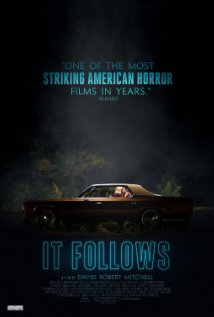 Like so many horror movies before it—Halloween, Friday the 13th, Invasion of the Body Snatchers and The Thing, to name a few—Robert David Mitchell’s It Follows is about sex, which, of course, has very specific connotations in the genre and is replete with concomitant baggage. The trope is one with which we’re all familiar: two teenagers engage in premarital sex and are subsequently murdered by the monster or knife-wielding psychopath; but unlike its predecessors, who were largely content to let sexual politics serve as a plot-progressing subtext, It Follows puts them in the driver’s seat. This does not imply that Mitchell’s film suffers from a lack of originality—or that he simply created a 21st Century interpretation of earlier films (from which he admittedly draws inspiration) that can be called original only insofar as it is more explicitly pornographic; on the contrary, It Follows stands in contrast to these in that it does not seem to fear the coital act itself—after all, we are far too “progressive” for that kind of thinking—but the results of such activity: sexually transmitted diseases. In other words, Mitchell, who in addition to directing wrote the screenplay for It Follows, has created a film that has the potential to revitalize the genre, although he has not done so by ignoring the cinematic shoulders on which he stands.
Like so many horror movies before it—Halloween, Friday the 13th, Invasion of the Body Snatchers and The Thing, to name a few—Robert David Mitchell’s It Follows is about sex, which, of course, has very specific connotations in the genre and is replete with concomitant baggage. The trope is one with which we’re all familiar: two teenagers engage in premarital sex and are subsequently murdered by the monster or knife-wielding psychopath; but unlike its predecessors, who were largely content to let sexual politics serve as a plot-progressing subtext, It Follows puts them in the driver’s seat. This does not imply that Mitchell’s film suffers from a lack of originality—or that he simply created a 21st Century interpretation of earlier films (from which he admittedly draws inspiration) that can be called original only insofar as it is more explicitly pornographic; on the contrary, It Follows stands in contrast to these in that it does not seem to fear the coital act itself—after all, we are far too “progressive” for that kind of thinking—but the results of such activity: sexually transmitted diseases. In other words, Mitchell, who in addition to directing wrote the screenplay for It Follows, has created a film that has the potential to revitalize the genre, although he has not done so by ignoring the cinematic shoulders on which he stands.
Jay Height (Maika Monroe) is your so-called typical American teenager. She hangs out with friends, attends the local high school, and, most of all, pines after Hugh (Jake Weary), a friendly neighborhood Mr. Dreamy. And even though Hugh acts strangely sometimes and seems to see people that Jay can’t, that doesn’t stop her from consummating their relationship in the back of his car. After sex, Hugh knocks her out using a chloroform-soaked rag; she wakes up strapped to a wheelchair in an abandoned parking garage. “This thing. It’s gonna follow you,” Hugh tells her. He continues, “Somebody gave it to me, and I passed it you.” Finally, before dumping Jay back at her house, he shows her the titular IT, which always manifests in human form and incessantly, relentlessly, and very slowly marches toward its victim. If it touches you, you’re dead; but, Hugh explains, there is one way to get it to stop following you: have sex with someone else, and pass IT on down the line. If it kills the person you passed it to, however, it comes back for you. Jay is faced with a choice, therefore. Should she pass it on, knowing that it could come back for her, or should she just rely on her friend’s help to try and survive?
David Robert Mitchell never gives IT a proper name in the film, and so the nature of this thing—though it can quite easily be read as the personification of a repressed fear of STDs—is shrouded in mystery both thematically and formally in It Follows. That the film is quite restrained at times is as unnerving as when it is not, and Mitchell’s refusal to rely on jump-scares as the sole source of suspense only makes them all the more disturbing when they come. Moreover, creating a shape-shifting monster that manifests in human form manufactures two distinct types of fear. On one level, the person that IT appears as can be quite frightening and grotesque, eliciting a visceral response; conversely, this physical manifestation can make IT difficult to spot in large crowds, and it thus creates a paranoid audience who is always looking for IT in the background of nearly every shot (or shuddering in fear every time one of her friends leaves her side, fearing that they could return as IT). And once Mitchell has trained his audience to look for IT, he deliberately upends expectations by devoting an entire scene to tricking the audience into mistaking ordinary people for the sinister force; he plays with the viewers— not in a cheap way, as an authorial flex of cinematic muscle, but in order to force the audience to identify with Jay. It makes us think that her friends might be right; maybe she is imagining things, and maybe we are too. Whatever the case may be, Mitchell deftly blends psychological and corporeal horror in It Follows.
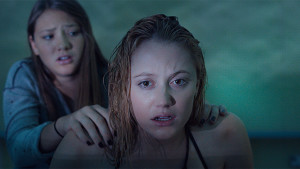 Adding to the film’s workings on multiple levels are Mitchell’s heavy use of wide-angle, panning and dollying, over-the-shoulder shots that are reminiscent of those in Kubrick’s The Shining and instill the same level of fear in suburbia as they do in the Overlook Hotel. This surreal camerawork is coupled with a synthesizer-laden score that invokes the cinema of John Carpenter, imbuing the film with a timeless quality. Music swells at the “wrong” times, refusing to provide a sought-after moment of respite. The relentlessness of the film itself is ironic, given that as an entry into the horror canon, It Follows is a refreshing, smart, and paradoxically original amalgamation of years of horror cinema.
Adding to the film’s workings on multiple levels are Mitchell’s heavy use of wide-angle, panning and dollying, over-the-shoulder shots that are reminiscent of those in Kubrick’s The Shining and instill the same level of fear in suburbia as they do in the Overlook Hotel. This surreal camerawork is coupled with a synthesizer-laden score that invokes the cinema of John Carpenter, imbuing the film with a timeless quality. Music swells at the “wrong” times, refusing to provide a sought-after moment of respite. The relentlessness of the film itself is ironic, given that as an entry into the horror canon, It Follows is a refreshing, smart, and paradoxically original amalgamation of years of horror cinema.
Even more prescient, perhaps, is how the film uses these formal elements to engender a thinly veiled consideration of the teenage fear of STDs. This idea that guilt stemming from sexual deviance, when repressed, will inevitably manifest itself in the form of a monster is far from new[1]; and until there is a cultural understanding and acceptance of a teleological, Christ-centered function of sex and sexuality, the shape-shifting IT will continue to make appearances at your local cinema. One can only hope that future manifestations will be as thoughtful and well-executed as It Follows.
1. E. Michael Jones lays out this approach to horror fiction in his book Monsters from the Id: The Rise of Horror in Fiction and Film.


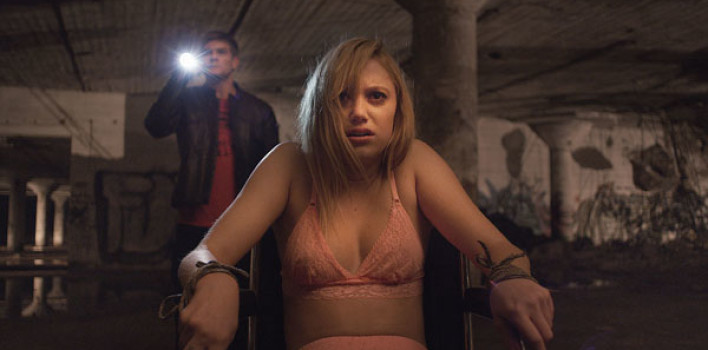
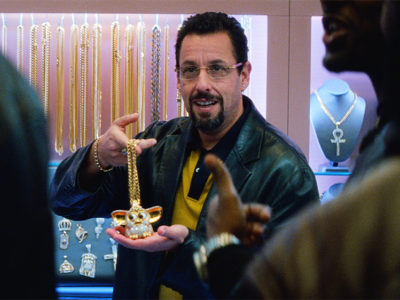

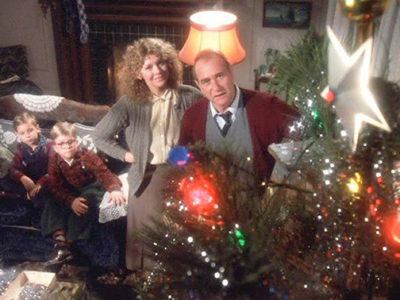



Pingback: Review | The Overnighters | Reel World Theology